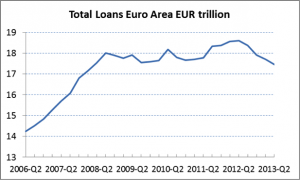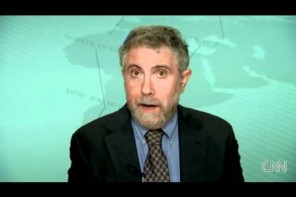It is generally held that by means of statistical and mathematical methods one can organize historical data into a useful body of information, which in turn can serve as the basis for the assessments of the state of the economy. It is also held that the knowledge secured from the assessment of the data is likely to be of a tentative nature since it is not possible to know the true nature of the facts of reality.
Some thinkers such as Milton Friedman held that since it is not possible to establish “how things really work,” then it does not really matter what the underlying assumptions of a theory are. On this way of thinking, what matters is that the theory can yield good predictions.
According to Friedman,
The ultimate goal of a positive science is the development of a theory or hypothesis that yields valid and meaningful (i.e., not truistic) predictions about phenomena not yet observed…. The relevant question to ask about the assumptions of a theory is not whether they are descriptively realistic, for they never are, but whether they are sufficiently good approximation for the purpose in hand. And this question can be answered only by seeing whether the theory works, which means whether it yields sufficiently accurate predictions.[1]
For instance, an economist forms a view that consumer outlays on goods and services are determined by disposable income. Based on this view he forms a model, which is then validated by means of statistical methods. The model is then employed in the assessments of the future direction of consumer spending.
If the model fails to produce accurate forecasts, it is either replaced, or modified by adding some other explanatory variables. What matters here is how well consumer outlays are correlated with various variables in order to secure a good predictive model. In this sense, all that an economist requires is to establish a good fit between dependent variable and various other variables.
On this way of thinking, we form our view regarding the real world based on how well the various pieces of information are correlated with each other.
Observe however, that by establishing a good fit between personal consumer outlays and the various other pieces of information one does not really explain the nature of consumer outlays, one just describes things.
By establishing that changes in consumer outlays are well correlated with the changes of various pieces of statistical data, one says nothing about the nature of things. This type of information does not tell us much regarding the underlying cause and effect. The fact that a good correlation was established between consumer outlays and disposable income does not imply that outlays are caused by disposable income. It is quite possible that one could also find very good correlation with some other variable. Does this then imply that the other variable is the cause of consumer outlays?
To make sense of the data we must have a theory, which stands on its own feet, and did not originate from the data.
The heart of such a theory is that it must originate from something real that cannot be refuted. For instance, a theory that rests on the foundation that human beings are acting consciously and purposefully complies with this requirement.
The statement that human beings are acting consciously and purposefully cannot be refuted, for anyone that tries to do this, does it consciously and purposefully i.e. he contradicts himself. (He consciously sets a goal to refute that human beings act consciously and purposefully).
Ludwig von Mises, the founder of this approach labelled it praxeology. Using the knowledge that human beings are acting consciously and purposefully, Mises was able to derive the entire body of economics.
Consequently, Mises has concluded that contrary to the natural sciences where the true causes are not known to us in economics the knowledge that human beings are acting consciously and purposely permits us to ascertain what the underlying true causes are. On this way of thinking the causes emanate from human beings themselves.
According to Mises,
The physicist does not know what electricity “is”. He knows only phenomena attributed to something called electricity. But the economist knows what actuates the market process. It is only thanks to this knowledge that he is in a position to distinguish market phenomena from other phenomena and to describe the market process.[2]
Also on this Rothbard said,
One example that Mises liked to use in his class to demonstrate the difference between two fundamental ways of approaching human behavior was in looking at Grand Central Station behavior during rush hour. The “objective” or “truly scientific” behaviorist, he pointed out, would observe the empirical events: e.g., people rushing back and forth, aimlessly at certain predictable times of day. And that is all he would know. But the true student of human action would start from the fact that all human behavior is purposive, and he would see the purpose is to get from home to the train to work in the morning, the opposite at night, etc. It is obvious which one would discover and know more about human behavior, and therefore which one would be the genuine “scientist”.[3]
Why natural sciences methods are not applicable in economics
Economists have always been envious of the practitioners of the natural sciences because of the statistical and mathematical methods employed in the natural sciences. They have thought that introducing the methods of natural sciences in economics could lead to a major break-through in our understanding of the world of economics.
Now, whilst the natural scientist can isolate various factors he does not, however, know the laws that govern these factors.
All that he can do is hypothesize regarding the “true law” that governs the behaviour of the various particles identified.
He can never be certain regarding the “true” laws of nature. On this Murray Rothbard wrote,
The laws may only be hypothecated. Their validity can only be determined by logically deducing consequents from them, which can be verified by appeal to the laboratory facts. Even if the laws explain the facts, however, and their inferences are consistent with them, the laws of physics can never be absolutely established. For some other law may prove more elegant or capable of explaining a wider range of facts. In physics, therefore, postulated explanations have to be hypothecated in such a way that they or their consequents can be empirically tested. Even then, the laws are only tentatively rather than absolutely valid.[4]
Whilst in the natural sciences we cannot know the true causes, we have seen that this is not the case with respect to economics.
The fact that man pursues purposeful actions implies that causes in the world of economics are known to us- they emanate from human beings themselves and not from outside factors.
In economics we do not have to hypothesize regarding the true causes – we know them. Hence, we do not require any empirical testing by means of statistical and mathematical methods to verify something, which is already known to us.
For instance, contrary to popular thinking, individual outlays on goods are not caused by real income as such.
In his own unique context, every individual decides how much of a given income will be used for consumption and how much for investments. Whilst it is true that people will respond to changes in their incomes, the response is not automatic.
Every individual assesses the change in his income against the particular set of goals he wants to achieve. He might decide that because of an increase in his income it is more beneficial for him to increase his investment rather than to increase his consumption.
Also, a logically derived theory permits us to ascertain the reasons for the possible discrepancy between the data and the theory. For instance, according to economic theory, individuals assign a greater importance of having goods at present rather than in the future. This emanates from the fact that in order to maintain their lives and wellbeing people have to consume at present rather than in the future. On this way of thinking interest rates cannot be negative. If however, we do observe negative interest rates this does not contradict the theory but rather forces the analyst to find out how this could have happened. Most likely, he will discover that the main reason for the discrepancy between the observed data and the theory is due to central bank monetary policies.
Conclusion
Reliance on statistical data as a foundation for the formation of a view about the state of the economy could generate suspect outcomes. For statistical data cannot produce much information about the underlying causes behind the facts of reality. What is required to ascertain the underlying causes is a logically worked out theory that “stands on its own feet” i.e. a theory that is not derived from the data. A theory introduced by Ludwig von Mises complies with this requirement. The Mises’s theory, which rests on the foundation that human beings act consciously and purposefully, enables to uncover the true causes in the world of economics. Ludwig von Mises held that since causality emanates from human beings and not outside factors no quantitative modelling is possible. The analysis should be qualitative.
According to Mises,
The mathematical method must be rejected not only on account of its barrenness. It is an entirely vicious method, starting from false assumptions and leading to fallacious inferences. Its syllogism are not only sterile; they divert the mind from the study of the real problems and distort the relations between the various phenomena.[5]
[1] Milton Friedman, Essays in Positive Economics, Chicago: University of Chicago Press, 1953.
[2] Ludwig von Mises, Human Action p 355.
[3] Murray N. Rothbard preface in Theory and History by Ludwig von Mises.
[4] Murray N. Rothbard, “Towards a Reconstruction of Utility and Welfare Economics”, On Freedom and Free Enterprise: The Economics of Free Enterprise, May Sennholz, ed. (Princeton, N.J.: D.Van Nostrand, 1956), p3.
[5] Ludwig von Mises, Human Action third revised edition Contemporary Books Inc, Chicago, p 350.



